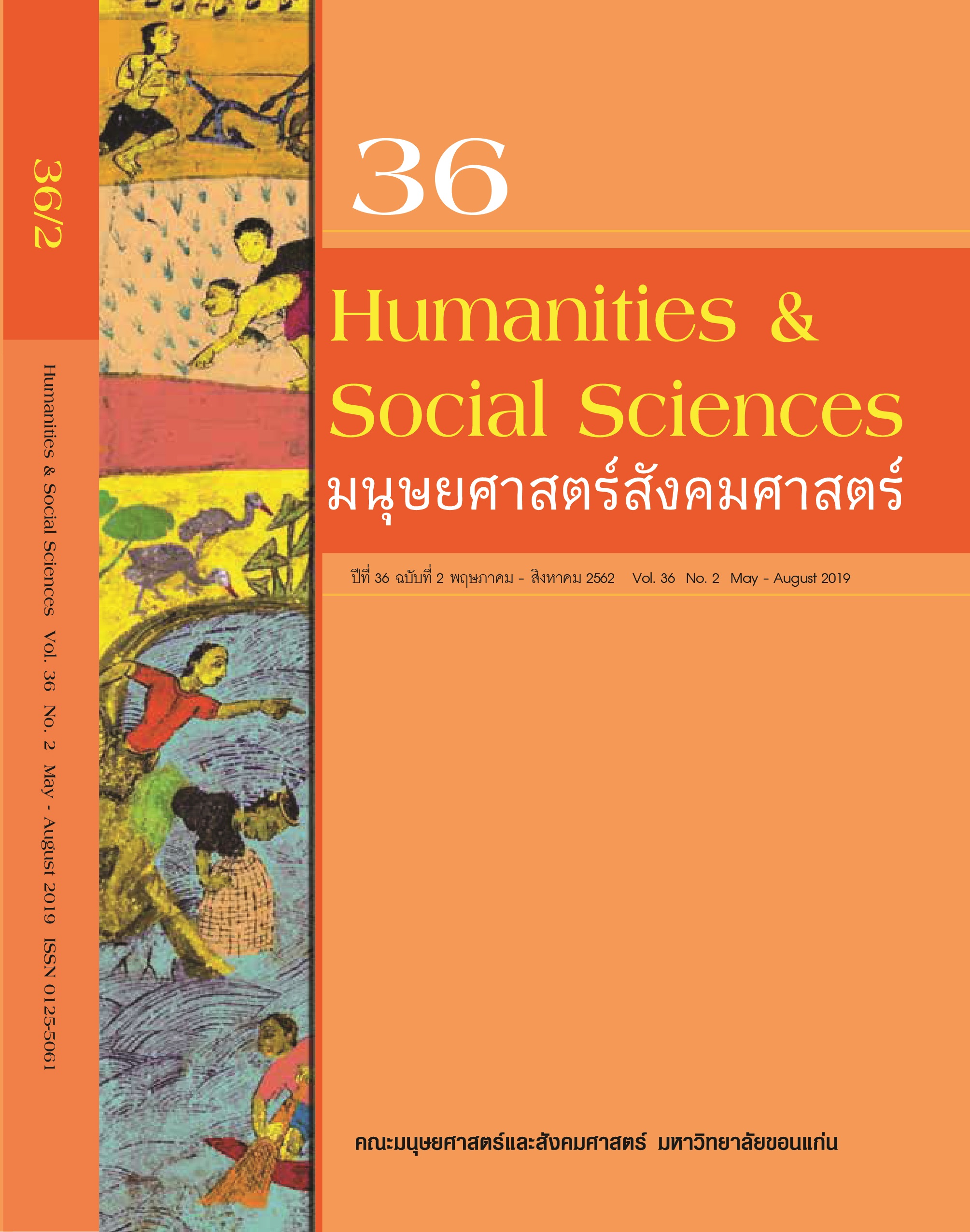รูปแบบองค์การที่มีสมรรถนะสูงของเทศบาลตำบล/High-performance Organization Model: The Subdistrict Municipality Case Study
The Subdistrict Municipality Case Study
Keywords:
Subdistrict Municipality, High Performance Organization, Confirmatory Factor Analysis, Mix Methods ResearchAbstract
Thailand has encountered economic and social crisis for a long time. One of the solutions the government selecting was the establishment of the local administrative organizations. The subdistrict municipality, one of the local administrative organizations, becomes like an important mechanism to solutions as it closes to the population and will be increasing in the future. However, while the subdistrict municipality has been doing duty to solve problems for the population, the performances of a subdistrict itself have been having many problems especially inefficient management. The problems have become an impediment to the subdistrict municipality’s ability. Therefore, the purpose of this research aims to study the factors of a high performance organization model for a subdistrict municipality in order to offer a high performance organization model. This research focused on administrative groups, employees, and the community in the subdistrict municipalities rewarded 1st, 2nd, 3rd prizes from ODLOC in fiscal year 2017. The approach was mixed-methods research. The data was collected by 502 questionnaires of the samples from three subdistrict municipalities in November 2018. Using the statistics of confirmatory factor analysis (CFA) found that the seven factors affected a subdistrict municipality’s proficiency to be a high performance organization. The five fit indices of the selected final model confirmed the model’s accuracy: /df=1.447, CFI=.970, NFI=.911, RMSEA=.055, and SRMR=.027. However, the findings suggested the items be modified. All factors obtained good validity and reliability: AVE=.658-789, CR=.843-.936, and Cronbach’s alpha=.882-.935. The quality-research part was a semi-structured interview. The results were consistent with those from the quantity research.
References
คณะกรรมการการกระจายอำนาจให้แก่องค์กรปกครองส่วนท้องถิ่น (ก.ก.ถ.) (2560). ประกาศ ก.ก.ถ. กรุงเทพฯ: สำนักปลัดสำนักนายกรัฐมนตรี
ดำรง วัฒนาและคณะ (ม.ป.ป.). บทความวิชาการเรื่อง ระบบการบริหารจัดการท้องถิ่น. โครงการศึกษาเบื้องต้นเรื่อง ระบบการบริหารจัดการท้องถิ่น. กรุงเทพฯ: สำนักงานกองทุนสนับสนุนการวิจัย (สกว.)
บริษัท การปิโตรเลียมแห่งประเทศ (2017). ข่าวธุรกิจ. สืบค้นจากhttps://www.pttplc.com/th/
เปรมศักดิ์ เพียยุระ (2558). การบรรยายพิเศษ: การปกครองท้องถิ่นไทย. มหาวิทยาลัยขอนแก่น
ยุทธพร อิสรชัย (2557). ปฏิรูป องค์กรปกครองส่วนท้องถิ่น. สืบค้นจากhttps://www.thairath.co.th
วีระศักดิ์ เครือเทพ (2558). คุยกับดร.วีระศักดิ์ เครือเทพ ผู้เปิดข้อมูลความเสี่ยง "หนี้ท้องถิ่น". สืบค้นจาก https://www.isranews.org/thaireform
ศูนย์ข้อมูลประเทศไทย. (2561). จุฬาลงกรณ์มหาวิทยาลัย: กรุงเทพ.
สภาปฏิรูปแห่งชาติ. (2558). การปกครองส่วนท้องถิ่น. สืบค้นจาก https://www.parliament.go.th
สมาคมการจัดการงานบุคคลแห่งประเทศไทย (PMAT) (2548). เอกสารเรียบเรียงจากงานสัมมนา "Thailand HR Knowledge Sharing Day & Exposition 2005" กรุงเทพฯ.
สำนักงานคณะกรรมการพัฒนาระบบราชการ. (2559). การพัฒนาคุณภาพการบริหารจัดการภาครัฐ : PMQA การพัฒนาองค์การสู่ความเป็นเลิศ. กรุงเทพฯ: กพร.
สำนักงานคณะกรรมการเศรษฐกิจและสังคมแห่งชาติ (2559). แผนพัฒนาเศรษฐกิจและสังคมแห่งชาติฉบับที่ 12. กรุงเทพฯ: สำนักนายกรัฐมนตรี
สำนักงานรางวัลคุณภาพแห่งชาติ (2553). เกณฑ์รางวัลคุณภาพแห่งชาติ ประจำปี 2553-2554 (TQA Criteria for Performance Exellence 2553-2554). กรุงเทพฯ: ศิวา โกลด์ มีเดีย จำกัด.
อุดม ทุมโฆสิต (2553). การปกครองท้องถิ่นสมัยใหม่. กรุงเทพฯ: แซท โฟร์ พริ้นติ้ง
อุดม ทุมโฆสิต, จินดาลักษณ์ วัฒนสินธุ์ และจำลอง โพธิ์บุญ (2548). รายงานการวิจัย เรื่องขอบเขตอำนาจหน้าที่และความสำพันธ์ระหว่างองค์กรปกครองส่วนท้องถิ่นกับราชการบริหารส่วนกลาง และส่วนภูมิภาค และระหว่างองค์กรปกครองท้องถิ่นด้วยกันเอง. กรุงเทพฯ: นิด้า
Buytendijk, F. (February, 2006). Five key to building high performance organization, Business Performance Management Magazine.
Carew, D., Kandarian, F., Parisi-Carew, E., Stoner, J., & Blanchard, K. (2010). Leading at a higher level. NJ: FT Press.
Etchegaray, J. M., & Fischer, W. G. (2010). Understanding evidence-based research methods: reliability and validity considerations in survey research. Health Environments Research & Design Journal, 4, 131-135.
Hair, J. F., Anderson, R. E., Tatham, R. L., & Black, W. C. (2010). Multivariate data analysis. Upper Saddle River, NJ: Pearson Prentice Hall.
Holbeche, L. (2004). HR and the high performance organization. Melcrum, 3(2).
Hu, L., & Bentler, P. M. (1999). Cutoff criteria for fit indexes in covariance structure analysis. Structural Equation Modeling: A Multidisciplinary Journal, 6(1), 1-55.
Kaplan, R.S., & Norton, D.P. (1992). “The Balanced Scorecard: Measures that Drive Performance.” Harvard Business Review. Boston: Harvard Business School Press.
Kaplan, R.S., & Norton, D.P. (1996). “The Balanced Scorecard: Translating Strategy Into Action.” Harvard Business Review. Boston: Harvard Business School Press.
Kaplan, R.S., & Norton, D.P. (2008). “The execution premium: Linking strategy to operations for competitive advantage. Boston: Harvard Business School Press.
Kish, L. (1965). Survey sampling. New York, NY: John Wiley and Sons.
Kline, R. B. (2005). Principles and practice of structural equation modeling. NY: Guilford.
Kotter, J. P., & Heskett, J. L. (1992). Corporate culture and performance. NY: Free Press.
Krejcie, R. V. & Morgan, D. W. (1970). Determining sample size for research activities, Educational and Psychological Measurement, 30, 607-610.
Lawler III, E. E. (2015). Designing high performance organizations. Center for Effective Organizations Marshall School of Business, USC. Retrieved from https://unpan1.un.org/intradoc/groups/public/documents/un/unpan001316-1.
Lindell, M. K., & Whitney, D. J. (2001). Accounting for common method variance in cross-sectional research designs. The Journal of Applied Psychology, 86, 114-121.
Miller, M. L. (2002). The high – performance organization – an assessment of virtues and values. Avaliable: http//www.ethicaeconomia.org/en/
NIST, US Department of Commerce.“Economic Evaluation of the Baldrige Performance Excellence Program December 2011”. Available: https://www.nist.gov.
Nunns, D. (2015). Evolving a performance organization. Available: www.em-i.com
Rainey, G. H. (2014). Understanding and managing public organization. CA: Jossey-Bass.
Reio, T. G. (2010). The threat of common method variance bias to theory building. Human Resource Development Review, 9, 405-411.
Ryu, E. (2011). Effects of skewness and kurtosis on normal-theory based maximum likelihood test statistic in multilevel structural equation modeling. Behavior Research Methods, 43, 1066-1074.
SCG. (2559). Sustainable Development. Available: https://www.scg.com/en/05sustainability
Schermerhorn, Jr., Hunt, J. G. and Osborn, R. N. (2003). Organizational Behavior, 8th ed. NY: John Wiley & Sons, Inc.,
Schumacker, R. E., & Lomax, R. G. (2004). A beginner’s guild to structural equation modeling (2nd ed.). Mahwah, NJ: Lawrence Erlbaum Associates.
Tavakol, M., & Dennick, R. (2011). Making sences of cronbach’ s alpha. International Journal of Medical Education, Retrieved from http:22creativecommons.org2licenses



